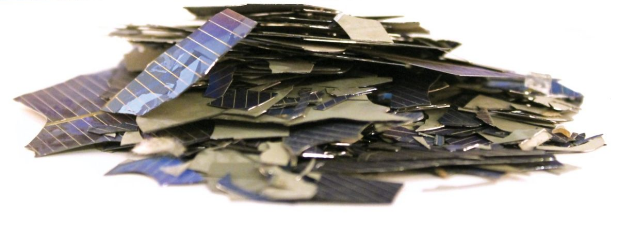According to a new NREL report published in Nature Energy, 8 million tons of solar photovoltaic panels are expected to hit landfills globally by 2030, with that number expanding to 80 million by 2050. The time to take a closer look at what happens after modules are no longer in use – and how to best prevent them from making up the 10% of electronic waste they are projected to by 2050 – is now.
Because of PV technology’s relatively adolescent nature, 90% of the world’s installed PV capacity has come on-line in the past 20 years. The focus has been directed more towards growing the market and installing PV, rather than thinking about what happens once these technologies reach their end-of-life. According to the report, however, the challenge of how to handle large volumes of end-of-life PV modules is starting to emerge.
Currently Europe is the only continent with dedicated crystalline silicon (c-Si) PV recycling facilities operating commercially, though this data is as-of early-2019. Additionally, a dedicated recycling facility is under development in Germany. The U.S., however, according to the report: “Lacks recyclers, policies, incentives and regulatory drivers specific to PV recycling at state (with the exception of Washington, which is home to a photovoltaic module stewardship and takeback program) and national scales.”
The Solar Energy Industries Association (SEIA) has a handful of partner facilities nationally that can handle parts of panels, with plans to add two to four partners per year, but that really represents the United States’ extent of recycling capabilities.
Much like how 90% of the world’s installed PV capacity has come on-line in the past 20 years, 90% of the world’s capacity comes via (c-Si) modules. The report shares that, while direct re-use of older c-Si modules is potentially, feasible, the large majority of end-of-life modules are not expected to meet the standards necessary for this re-use.
Instead, the authors of the report recommend that recycling efforts focus on high-value silicon, rather than intact silicon wafers. The report includes a proposition for a research and development agenda centered around achieving three related goals for c-Si PV recycling: a favorable cost compared to disposal; a sustainable, circular supply of materials; and the reduction of environmental impacts compared to disposal and the provision of virgin materials.
The report recommends a de-emphasis on the recovery of intact silicon wafers, since this will prove to be a negligible section of the market, with that focus being shifted to investigation how recovered silicon compares to solar-grade silicon at various stages in its value chain. From there, the next step is to design purification processes for recovered silicon.
While those recommendations tackle the logistics of developing recycling standards, the report also outlines the necessity of maintaining a low environmental impact in whatever future processes are deemed best. This includes making sure that achieving an optimal cost and revenue ratio in recycling doesn’t come at the expense of a less environmentally conscious way of recycling.
The report also points out that establishing a single, effective, recycling method isn’t the last step and that those in recycling should be conscious of PV changes and design adaptable recycling infrastructure in accordance with any changes.
NREL looks to tackle PV waste before it’s too late
With up to 80 million tons of solar photovoltaic panels expected to hit landfills globally by 2050, the national lab has taken a look into refining how crystalline silicon module recycling is done — in order to establish a circular market.
Source:PV magazine
ViaTIM SYLVIA






